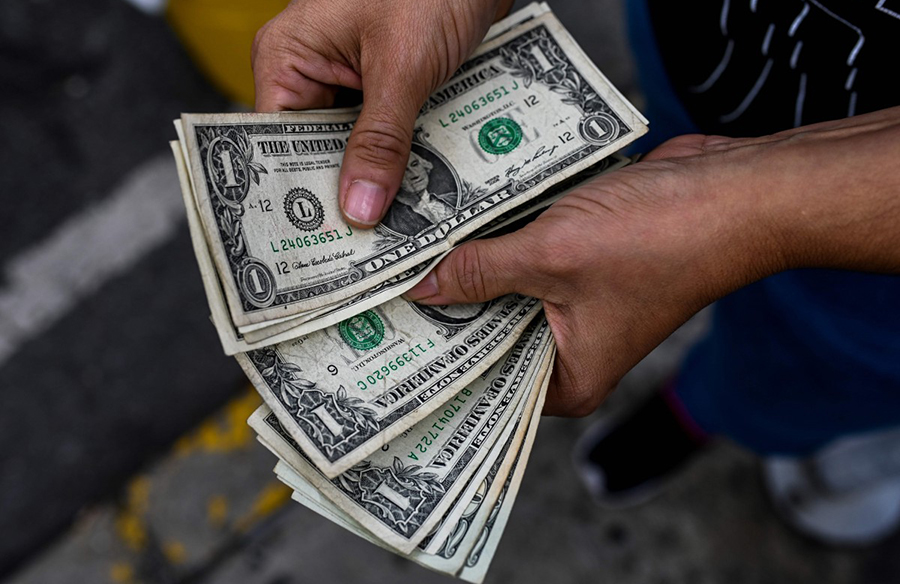RIO DE JANEIRO, BRAZIL – Covid-19 vaccination, a peaceful transition of power in the United States, expectations of further fiscal stimulus, and signs of an end to emergency aid in Brasília.
The scenario of reduced uncertainties about the economy that seemed unlikely until a month ago, when the dollar was rated above R$ 5.80, has finally materialized and knocked down the price of the American currency in the world and in Brazil.
Since early November, the dollar has accumulated a 10.8% drop against the Brazilian real, which has lost the position of the most depreciated currency in the world among the main emerging countries to the Turkish lira. And, according to exchange specialists, the Brazilian currency may appreciate even more.

“The real still has much room to appreciate and we are very optimistic about next year when we expect the currency to reach R$4.25”, says Samuel Castro, exchange and interest strategist for Latin America of the French BNP Paribas bank.
Over the first three days in December alone, the dollar drop is close to 4%. Part of this sharp appreciation of the real within a very short period of time is due to the strong demand by foreign investors for Brazilian assets, particularly government bonds, according to Alvaro Frasson, economist at BTG Pactual Digital.
“On Wednesday, the Treasury’s supply had demand three times higher than supply. This shows that foreigners are interested in Brazil’s fixed income share. This is because Brazil holds a very significant international reserve and offers security to invest in dollar-denominated bonds. This is an important aspect to understand why the real is no longer the most depreciated currency,” he explains.
Frasson also notes that the strong foreign investor demand for Brazilian shares contributed greatly to the dollar drop. In November, the balance of foreigners in the stock market was positive at R$33.3 billion, making it the month with the highest inflow of external capital in the B3 Exchange’s history.
All of this helped the U.S. currency lose an important “support”, according to Álvaro Marangoni, partner of Quadrante Investments, which was the R$5.28 mark. “We have seen a foreign flow come into Brazilian assets and the exchange was very stressed. This depreciation makes perfect sense to us.”
Fernando Bergallo, CEO of FB Capital exchange brokerage, says that lower macroeconomic uncertainties have contributed to the inflow of foreign currency not only in Brazil but also in other emerging countries. “The external issue is very helpful, particularly the progress of vaccines.”
Nevertheless, the appreciation of the real against the dollar has been higher than its peers, such as the Mexican peso, the Colombian peso, and the South African rand, currencies that, in a month, have accumulated an increase of 5% against the American currency – about half of what the real has appreciated.
According to Castro, this is due to the greater volatility of the Brazilian currency. “The real suffers most when the dollar appreciates in the world and benefits more when the dollar drops. And as our currency had already depreciated more than the other emerging currencies, the room for it to appreciate is also larger,” he comments.
Castro says that the real’s depreciation favored its subsequent appreciation due to international trade. “In terms of trade, the price of Brazilian exports has improved a lot in relation to imports, which has a positive impact on the currency.”
“Different technical analyses show that the correct price of the dollar would range between R$4.50 and R$4.80, despite the deteriorating fiscal scenario. So, we expect that at some point this defensive stance will be dissolved,” says Bergallo.
But, according to Castro, although the real is expected to appreciate, the currency should continue to be highly volatile. “Our lower interest rate should keep the real more prone to global fluctuations”.
Impact on foreign exchange funds and BDRs
The sharp dollar drop has mainly impacted exchange funds, which by the end of November had accumulated a net funding result of R$1.5 billion in the year, according to Anbima data consolidated by Economatica. According to Rodrigo Franchini, partner of Monte Bravo, it makes sense now to reduce part of this allocation, particularly if investors seek long and medium-term returns. “In an optimistic scenario, the dollar loses strength. This can even produce a very short-term opportunism, but it is ultimately more dangerous,” he ponders.
“The dollar is expected to close the year at R$5,40 and to reach R$5 next year, according to the Focus report. So it doesn’t make much sense to go in with it still above R$5. Unless investors are expecting a very adverse scenario. But the market is witnessing the opposite,” says Franchini.
Other investments that tend to lose profitability with the dollar drop are investment funds abroad and BDRs, which are depositary receipts (similar to stock shares) of foreign companies traded in the Brazilian market. However, for Bernardo Carneiro, Exame Research BDR analyst, this effect should not be considered by investors looking for long-term profits.
“A trader seeking to profit in days, weeks, or months will want to buy a BDR when the dollar stands at R$5 or R$4,80. But, for those seeking long-term profits, these dollar fluctuations are irrelevant. There are stocks in the United States or in China that have quintupled prices. The dollar doesn’t change as exponentially as the value of companies. Therefore, investors will either profit or lose by choosing a BDR,” he says.
Source: Exame

